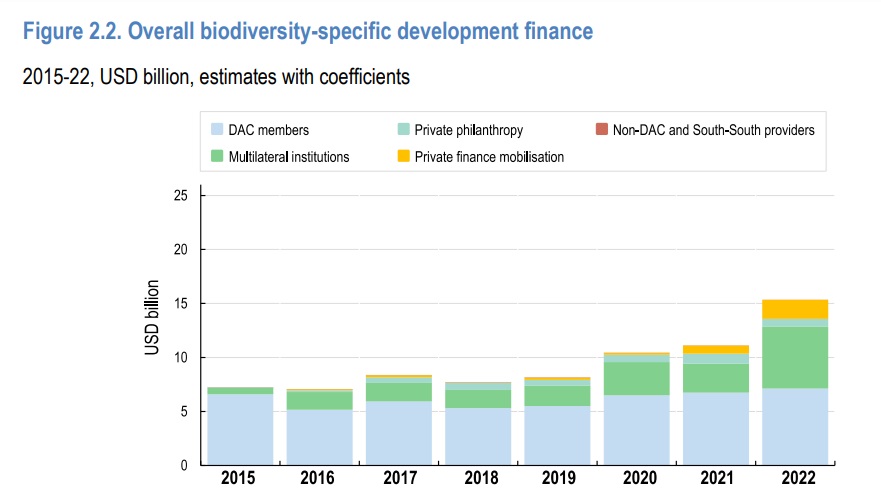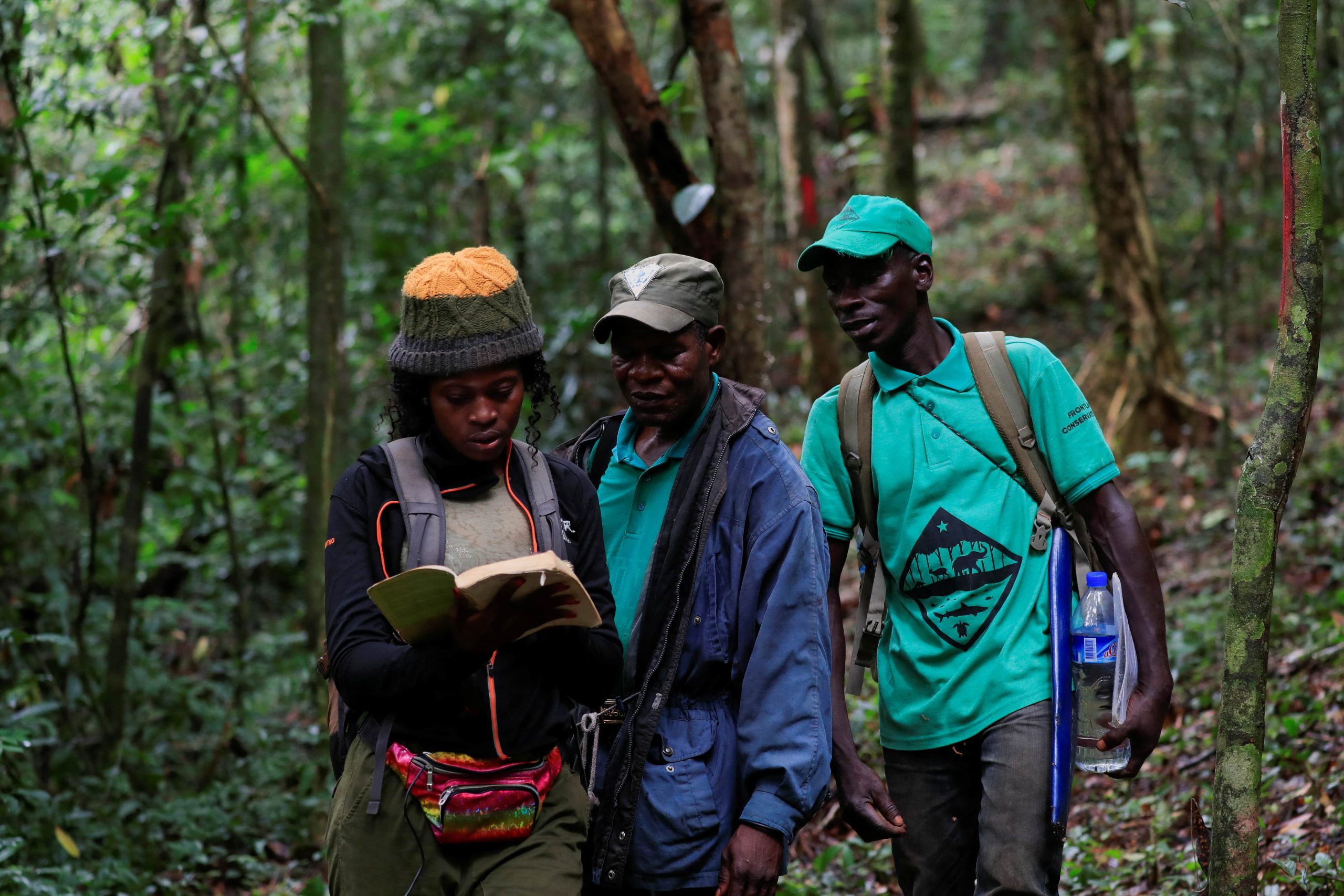Funding for efforts to protect and restore nature increased to $15.4 billion in 2022 – mostly driven by concessional loans from multilateral banks
Development funding for biodiversity grew significantly in 2022, but the money came mostly in the form of loans rather than grants, according to new figures from the Organisation for Economic Cooperation and Development (OECD).
The OECD report, which analysed the period from 2015 to 2022, shows that funding for efforts to protect and restore nature grew from $11.1 billion in 2021 to $15.4 billion in 2022.
The increase came largely from multilateral institutions – mainly development banks – which increased their funding from $2.7 billion in 2021 to $5.7 billion in 2022, mostly by offering concessional loans, which are cheaper than borrowing on commercial terms.
The issue of whether loan finance should be provided to already debt-strapped developing countries for action on climate and nature is hotly debated, with poorer countries and climate justice activists calling for more money to be disbursed as grants.

Multilateral funding for biodiversity (in green) saw the biggest increase between 2021 and 2022, mostly in the form of loans. (Photo: OECD)
Boosting funds for biodiversity protection will be a key issue at the COP16 UN conference in Colombia late next month, as countries face the challenge of meeting a goal to mobilise $20 billion by 2025 – a sum agreed two years ago at COP15 in Montreal. This, in turn, will influence the creation of new national biodiversity plans, experts say, which could also help curb rising carbon emissions.
To channel some of this money, governments agreed at COP15 to set up a new international biodiversity fund established under the Global Environmental Facility (GEF). It has struggled to get off the ground, receiving a scant $200 million so far.
“It is critical that historic and new donors arrive at COP16 with substantial new funding announcements for developing countries – primarily in public grants, not loans,” said Brian O’Donnell, director of the advocacy group Campaign for Nature.
Causes for concern
While it is “certainly good news” that biodiversity funding has increased in the years leading up to 2022, there are some concerning trends, O’Donnell told Climate Home News.
For example, he pointed to a disparity between funding for projects marked as “biodiversity-specific”, which has the principal goal of reversing biodiversity loss, and funding marked as “biodiversity-related”, which is mainly aimed at tackling a different problem but yields some benefits for biodiversity.
The OECD report shows that, while overall biodiversity funding increased, the amount with the principal goal of tackling biodiversity loss decreased, falling from $4.6 billion in 2015 to $3.8 billion in 2022.
“We can’t safeguard nature and the planet just by making it a tangential approach to other funding endeavours,” said O’Donnell. “The majority of the funding has to be with the true desire to safeguard nature.”
Oscar Soria, a veteran biodiversity campaigner and CEO of The Common Initiative, an environmental think-tank, agreed that the lack of funding dedicated directly to biodiversity could limit efforts to protect conservation areas and restore nature.
The prevalence of loans over grants also poses a challenge for developing countries, the two experts said. “With development budgets shrinking in key donor countries, the future of real
Read More

